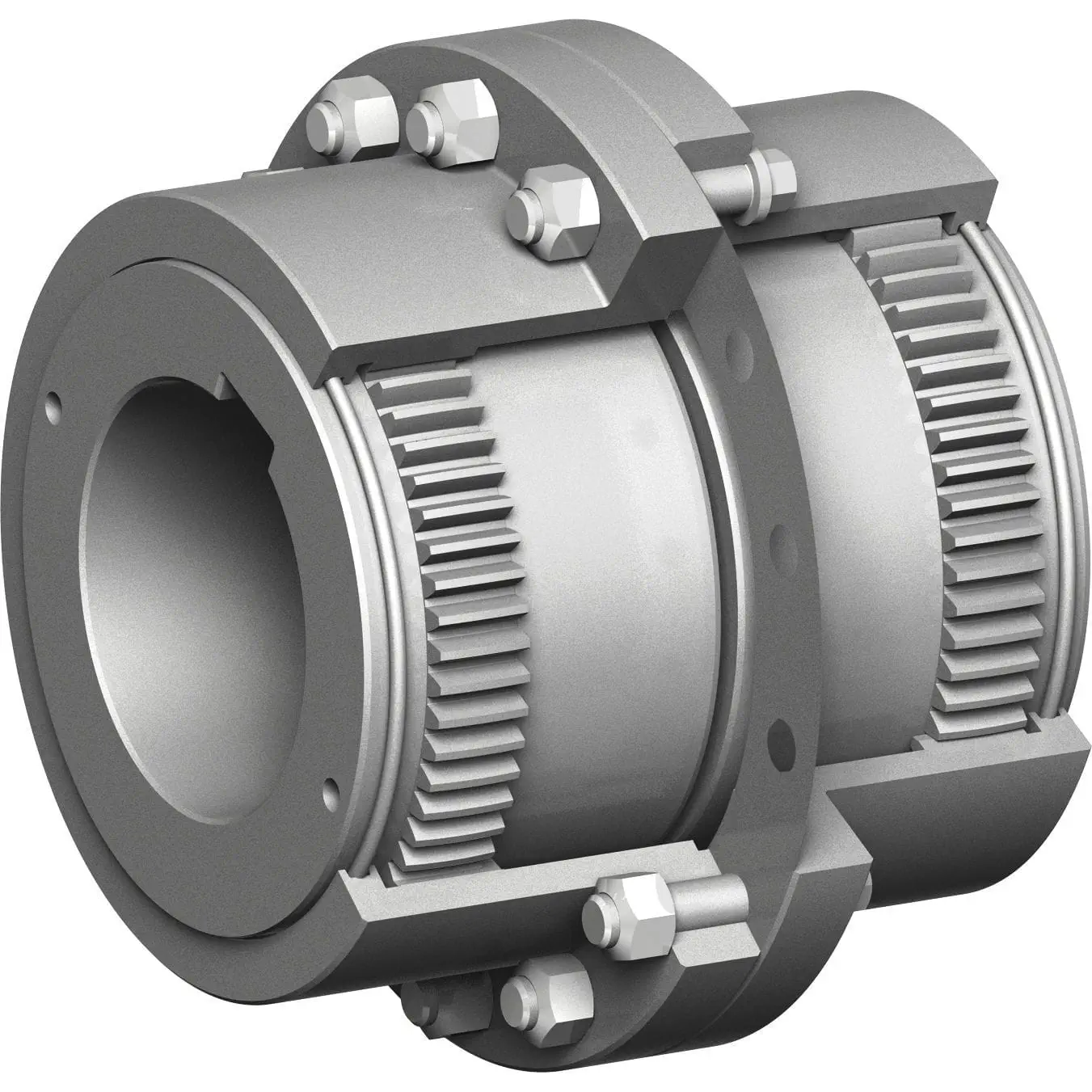Product Description
High Quality Steel Tooth Flexible Rubber Plastic Falk Flexible Nylon Sleeve Universal Joints Chainbox Muff Gear Coupling Replacement of Bowex Coupling
A gear coupling is a type of mechanical coupling that is used to connect 2 shafts at their ends to transmit torque and rotational motion. It consists of 2 hubs with external teeth connected by a flexible element, typically a sleeve or a disk, with internal teeth.
The hubs are usually made of steel or other high-strength materials, and the teeth are cut using precision machining techniques to ensure proper fit and alignment. The flexible element is designed to compensate for any misalignment between the 2 shafts and to allow for a slight amount of angular and axial misalignment during operation.
Gear couplings are commonly used in heavy-duty applications, such as in large machinery and industrial equipment, where high torque and precision are required. They are also used in applications where shafts are subjected to significant amounts of vibration and shock, such as in marine and aerospace applications.
One of the advantages of gear couplings is that they are highly efficient at transmitting torque, with very little energy loss. They are also durable and require minimal maintenance, making them popular in many industries.
/* January 22, 2571 19:08:37 */!function(){function s(e,r){var a,o={};try{e&&e.split(“,”).forEach(function(e,t){e&&(a=e.match(/(.*?):(.*)$/))&&1

Industry Standards and Guidelines for Tooth Couplings
There are industry standards and guidelines that govern the design and use of tooth couplings. Some of these include:
- AGMA 9002-A94: This standard provides information on the selection and application of flexible couplings, including tooth couplings.
- ISO 14691: This international standard specifies methods for calculating the load capacity of tooth couplings.
- DIN 740: This German standard provides information on dimensions and requirements for tooth couplings.
- API 671: This American Petroleum Institute (API) standard specifies requirements for special purpose couplings, including tooth couplings, for use in the petroleum and natural gas industries.
These standards provide guidelines for the design, selection, installation, and maintenance of tooth couplings to ensure safe and reliable operation. Engineers and designers often refer to these standards to ensure that tooth couplings are used appropriately in various applications.

Backlash in Tooth Couplings and Its Impact on Performance
Backlash is a crucial factor in tooth couplings that affects their performance. Backlash refers to the angular movement or play between the teeth of the coupling when there is a change in the direction of loading. It is the amount by which a tooth space exceeds the thickness of the engaged tooth.
The impact of backlash on performance includes:
- Positioning Accuracy: Backlash can lead to positioning inaccuracies in systems where precise motion control is required. As the direction of loading changes, the teeth need to engage before transmitting torque, causing a delay and affecting accuracy.
- Reversal Shock: In systems with frequent changes in direction, backlash can result in a sudden impact or shock when the teeth engage, leading to vibrations and potential damage to the coupling and connected components.
- System Response: Backlash can introduce a dead zone or delay in the system response when the loading direction changes. This can affect the system’s ability to respond quickly to changes in input.
- Reduced Efficiency: Backlash causes energy loss due to the need to overcome the play between teeth during direction changes. This can reduce the overall efficiency of the system.
- Wear and Fatigue: Backlash can lead to wear and fatigue of the coupling teeth and other components due to repeated impacts during loading changes.
- Noise and Vibration: The sudden engagement of teeth can generate noise and vibration, affecting the overall smoothness of operation and potentially leading to fatigue failure.
Minimizing backlash is important for improving the performance of tooth couplings. Some couplings are designed with features to reduce or compensate for backlash, while others require precise alignment and regular maintenance to manage backlash within acceptable limits.

Role of Tooth Couplings in Mechanical Systems
A tooth coupling is a type of mechanical coupling that connects two shafts to transmit torque while allowing for angular misalignment and axial movement between them. It consists of two hubs with external teeth that mesh together, engaging the teeth to transfer torque from one shaft to another. Tooth couplings are commonly used in various mechanical systems to provide a reliable and efficient means of transmitting power and motion.


editor by CX 2024-04-23
by
Tags:
Leave a Reply